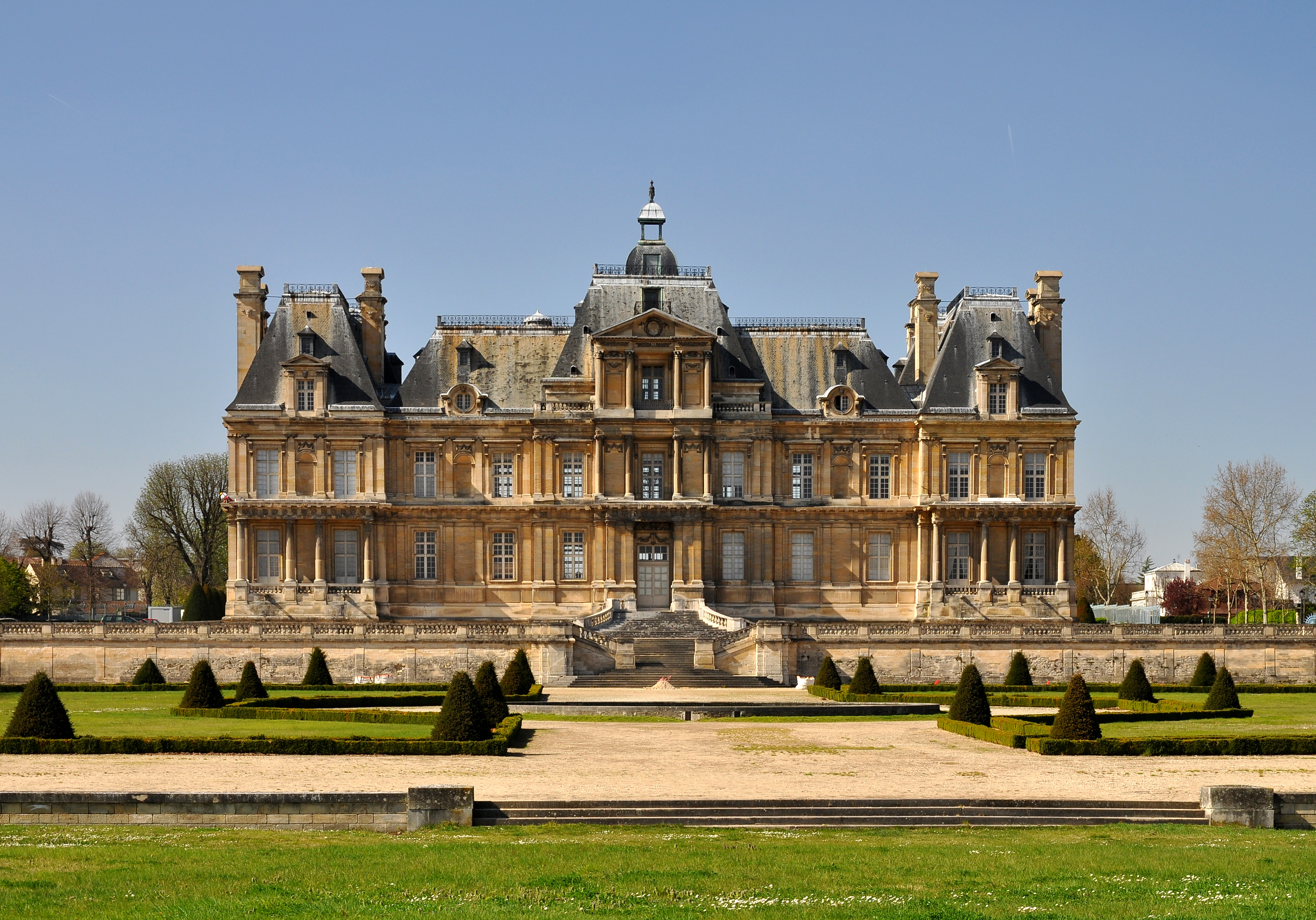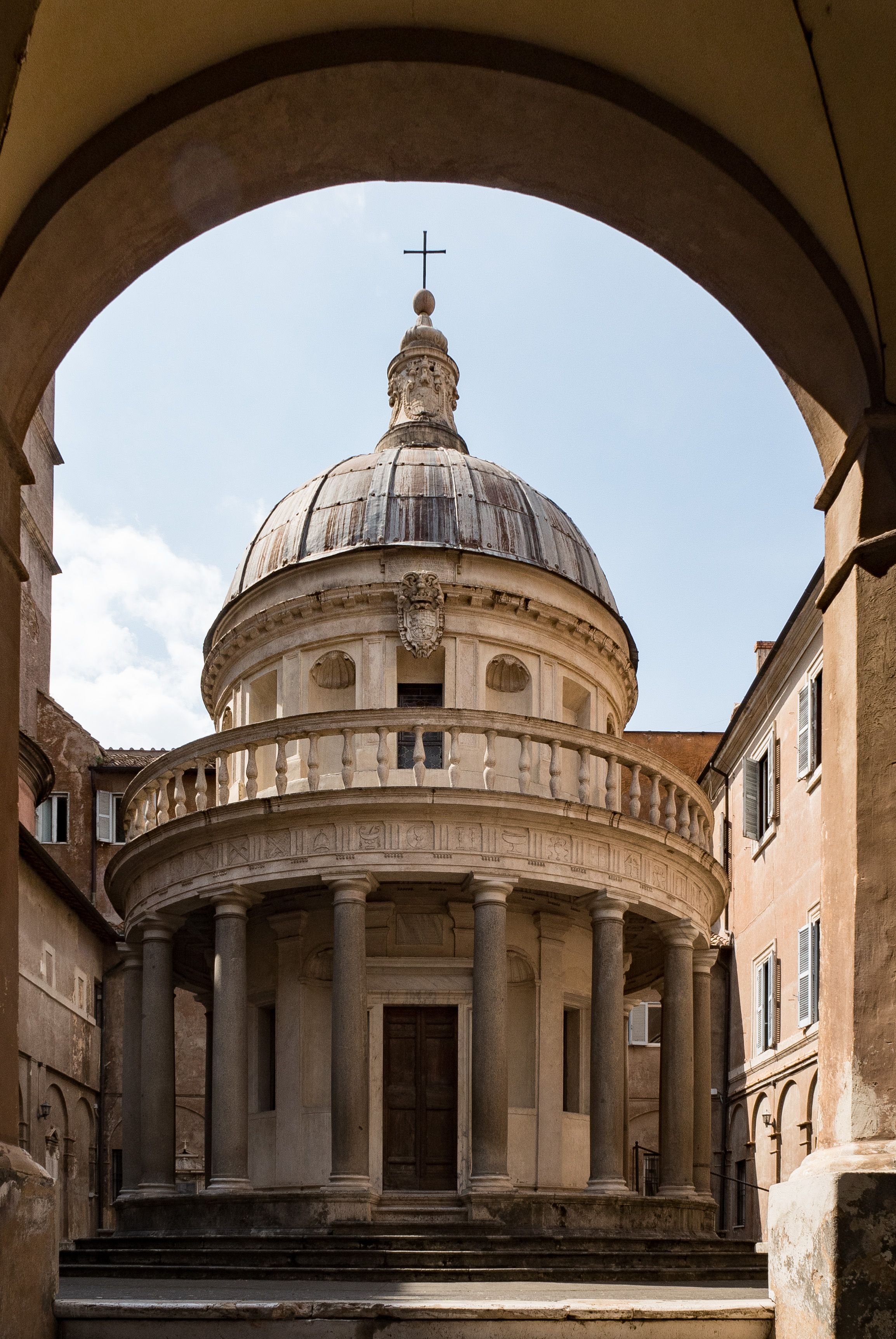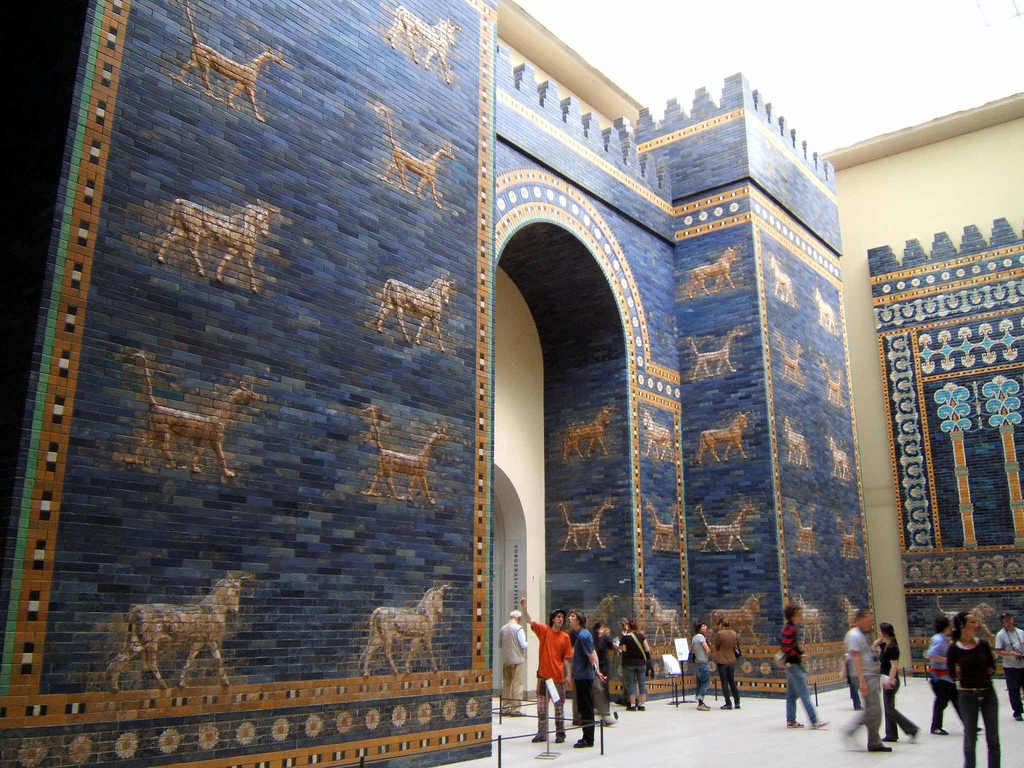|
Edifice
A building, or edifice, is an enclosed structure with a roof and walls standing more or less permanently in one place, such as a house or factory (although there's also portable buildings). Buildings come in a variety of sizes, shapes, and functions, and have been adapted throughout history for a wide number of factors, from building materials available, to weather conditions, land prices, ground conditions, specific uses, prestige, and aesthetic reasons. To better understand the term ''building'' compare the list of nonbuilding structures. Buildings serve several societal needs – primarily as shelter from weather, security, living space, privacy, to store belongings, and to comfortably live and work. A building as a shelter represents a physical division of the human habitat (a place of comfort and safety) and the ''outside'' (a place that at times may be harsh and harmful). Ever since the first cave paintings, buildings have also become objects or canvasses of much artist ... [...More Info...] [...Related Items...] OR: [Wikipedia] [Google] [Baidu] |
Badshahi Mosque
The Badshahi Mosque (Urdu, Punjabi: ; literally ''The Royal Mosque'') is a Mughal-era congregational mosque in Lahore, capital of the Pakistani province of Punjab. The mosque is located west of Lahore Fort along the outskirts of the Walled City of Lahore, and is widely considered to be one of Lahore's most iconic landmarks. The Badshahi Mosque was constructed by the Mughal emperor Aurangzeb between 1671 and 1673 and was the largest mosque in the world from 1673 to 1986. The mosque is an important example of Mughal architecture, with an exterior that is decorated with carved red sandstone with marble inlay. It remains the largest mosque of the Mughal-era, and is the third-largest mosque in Pakistan. After the fall of the Mughal Empire, the mosque was used as a garrison by the British Empire, and is now one of Pakistan's most iconic sights. Location The mosque is located adjacent to the Walled City of Lahore, Pakistan. The entrance to the mosque lies on the western side ... [...More Info...] [...Related Items...] OR: [Wikipedia] [Google] [Baidu] |
Gothic Architecture
Gothic architecture (or pointed architecture) is an architectural style that was prevalent in Europe from the late 12th to the 16th century, during the High and Late Middle Ages, surviving into the 17th and 18th centuries in some areas. It evolved from Romanesque architecture and was succeeded by Renaissance architecture. It originated in the Île-de-France and Picardy regions of northern France. The style at the time was sometimes known as ''opus Francigenum'' (lit. French work); the term ''Gothic'' was first applied contemptuously during the later Renaissance, by those ambitious to revive the architecture of classical antiquity. The defining design element of Gothic architecture is the pointed or ogival arch. The use of the pointed arch in turn led to the development of the pointed rib vault and flying buttresses, combined with elaborate tracery and stained glass windows. At the Abbey of Saint-Denis, near Paris, the choir was reconstructed between 1140 and 114 ... [...More Info...] [...Related Items...] OR: [Wikipedia] [Google] [Baidu] |
Sainte-Chapelle
The Sainte-Chapelle (; en, Holy Chapel) is a royal chapel in the Gothic style, within the medieval Palais de la Cité, the residence of the Kings of France until the 14th century, on the Île de la Cité in the River Seine in Paris, France. Construction began sometime after 1238 and the chapel was consecrated on 26 April 1248. The Sainte-Chapelle is considered among the highest achievements of the Rayonnant period of Gothic architecture. It was commissioned by King Louis IX of France to house his collection of Passion relics, including Christ's Crown of Thorns – one of the most important relics in medieval Christendom. This was later held in the nearby Notre-Dame Cathedral until the 2019 fire, which it survived. Along with the Conciergerie, Sainte-Chapelle is one of the earliest surviving buildings of the Capetian royal palace on the Île de la Cité. Although damaged during the French Revolution and restored in the 19th century, it has one of the most extensive 13th ... [...More Info...] [...Related Items...] OR: [Wikipedia] [Google] [Baidu] |
Ancient Egyptian Architecture
Spanning over three thousand years, ancient Egypt was not one stable civilization but in constant change and upheaval, commonly split into periods by historians. Likewise, ancient Egyptian architecture is not one style, but a set of styles differing over time but with some commonalities. The best known example of ancient Egyptian architecture are the Egyptian pyramids, while excavated temples, palaces, tombs, and fortresses have also been studied. Most buildings were built of locally available mud brick and limestone by levied workers. Monumental buildings were built using the post and lintel method of construction. Many buildings were aligned astronomically. Columns were typically adorned with capitals decorated to resemble plants important to Egyptian civilization, such as the papyrus plant. Ancient Egyptian architectural motifs have influenced architecture elsewhere, reaching the wider world first during the Orientalizing period and again during the nineteenth-century ... [...More Info...] [...Related Items...] OR: [Wikipedia] [Google] [Baidu] |
Islamic Architecture
Islamic architecture comprises the architectural styles of buildings associated with Islam. It encompasses both secular and religious styles from the early history of Islam to the present day. The Islamic world encompasses a wide geographic area historically ranging from western Africa and Europe to eastern Asia. Certain commonalities are shared by Islamic architectural styles across all these regions, but over time different regions developed their own styles according to local materials and techniques, local dynasties and patrons, different regional centers of artistic production, and sometimes different religious affiliations. Early Islamic architecture was influenced by Roman, Byzantine, Iranian, and Mesopotamian architecture and all other lands which the Early Muslim conquests conquered in the seventh and eighth centuries.: "As the Arabs did not have an architectural tradition suited to the needs of a great empire, they adopted the building methods of the defeated S ... [...More Info...] [...Related Items...] OR: [Wikipedia] [Google] [Baidu] |
Ancient Roman Architecture
Ancient Roman architecture adopted the external language of classical Greek architecture for the purposes of the ancient Romans, but was different from Greek buildings, becoming a new architectural style. The two styles are often considered one body of classical architecture. Roman architecture flourished in the Roman Republic and to even a greater extent under the Empire, when the great majority of surviving buildings were constructed. It used new materials, particularly Roman concrete, and newer technologies such as the arch and the dome to make buildings that were typically strong and well-engineered. Large numbers remain in some form across the former empire, sometimes complete and still in use to this day. Roman architecture covers the period from the establishment of the Roman Republic in 509 BC to about the 4th century AD, after which it becomes reclassified as Late Antique or Byzantine architecture. Few substantial examples survive from before about 100 BC, and most of ... [...More Info...] [...Related Items...] OR: [Wikipedia] [Google] [Baidu] |
Byzantine Architecture
Byzantine architecture is the architecture of the Byzantine Empire, or Eastern Roman Empire. The Byzantine era is usually dated from 330 AD, when Constantine the Great moved the Roman capital to Byzantium, which became Constantinople, until the Fall of Constantinople, fall of the Byzantine Empire in 1453. However, there was initially no hard line between the Byzantine and Roman empires, and early Byzantine architecture is stylistically and structurally indistinguishable from earlier Roman architecture. This terminology was introduced by modern historians to designate the medieval Roman Empire as it evolved as a distinct artistic and cultural entity centered on the new capital of Constantinople (modern-day Istanbul) rather than the city of Rome and its environs. Its architecture dramatically influenced the later medieval architecture throughout Europe and the Near East, and became the primary progenitor of the Renaissance architecture, Renaissance and Ottoman architecture, Ottoma ... [...More Info...] [...Related Items...] OR: [Wikipedia] [Google] [Baidu] |
Château De Maisons
The Château de Maisons (now Château de Maisons-Laffitte), designed by François Mansart from 1630 to 1651, is a prime example of French baroque architecture and a reference point in the history of French architecture. The château is located in Maisons-Laffitte, a northwestern suburb of Paris, in the department of Yvelines, Île-de-France. History The Longueil family, long associated with the ''Parlement de Paris'', had been in possession of part of the seigneurie of Maisons since 1460, and a full share since 1602. Beginning in 1630, and for the next decades, René de Longueil, first president of the ''Cour des aides'' and then '' président à mortier'' to the ''Parlement de Paris'', devoted the fortune inherited by his wife, Madeleine Boulenc de Crévecœur (who died in 1636), to the construction of a magnificent château. By 1649, he was able to spend the summer months in his new house, but works on the outbuildings continued after that date. Louis XIV visited Mais ... [...More Info...] [...Related Items...] OR: [Wikipedia] [Google] [Baidu] |
San Pietro In Montorio
San Pietro in Montorio (Saint Peter on the Golden Mountain) is a church in Rome, Italy, which includes in its courtyard the ''Tempietto'', a small commemorative ''martyrium'' (tomb) built by Donato Bramante. History The Church of San Pietro in Montorio was built on the site of an earlier 9th-century church dedicated to Saint Peter on Rome's Janiculum hill. It serves as a shrine, marking the supposed site of St. Peter's crucifixion. In the 15th century, the ruins were given to the Amadist friars, a reform branch of the Franciscans, founded by the Blessed Amadeus of Portugal, who served as confessor to Pope Sixtus IV from 1472. Commissioned by Ferdinand and Isabella of Spain. It is a titular church, whose current title holder, since 1 March 2008, is Cardinal James Francis Stafford. Interior The church is decorated with artworks by prominent 16th- and 17th-century masters. The first chapel on the right contains Sebastiano del Piombo's ''Flagellation'' and ''Transfiguration ... [...More Info...] [...Related Items...] OR: [Wikipedia] [Google] [Baidu] |
Renaissance Architecture
Renaissance architecture is the European architecture of the period between the early 15th and early 16th centuries in different regions, demonstrating a conscious revival and development of certain elements of ancient Greek and Roman thought and material culture. Stylistically, Renaissance architecture followed Gothic architecture and was succeeded by Baroque architecture. Developed first in Florence, with Filippo Brunelleschi as one of its innovators, the Renaissance style quickly spread to other Italian cities. The style was carried to Spain, France, Germany, England, Russia and other parts of Europe at different dates and with varying degrees of impact. Renaissance style places emphasis on symmetry, proportion, geometry and the regularity of parts, as demonstrated in the architecture of classical antiquity and in particular ancient Roman architecture, of which many examples remained. Orderly arrangements of columns, pilasters and lintels, as well as the use of semici ... [...More Info...] [...Related Items...] OR: [Wikipedia] [Google] [Baidu] |
Ishtar Gate
The Ishtar Gate was the eighth gate to the inner city of Babylon (in the area of present-day Hillah, Babil Governorate, Iraq). It was constructed circa 575 BCE by order of King Nebuchadnezzar II on the north side of the city. It was part of a grand walled processional way leading into the city. The walls were finished in glazed bricks mostly in blue, with animals and deities in low relief at intervals, these also made up of bricks that are molded and colored differently. The German archaeologist Robert Koldewey led the excavation of the site from 1904 to 1914. After the end of the First World War in 1918, the smaller gate was reconstructed in the Pergamon Museum. The gate is 50 feet (15.2 meters) high, and the original foundations extended another 45 feet (13.7 meters) underground. The reconstruction of the Ishtar Gate in the Pergamon Museum is not a complete replica of the entire gate. The original structure was a double gate with a smaller frontal gate and a large ... [...More Info...] [...Related Items...] OR: [Wikipedia] [Google] [Baidu] |
Baroque Architecture
Baroque architecture is a highly decorative and theatrical style which appeared in Italy in the early 17th century and gradually spread across Europe. It was originally introduced by the Catholic Church, particularly by the Jesuits, as a means to combat the Reformation and the Protestant church with a new architecture that inspired surprise and awe. It reached its peak in the High Baroque (1625–1675), when it was used in churches and palaces in Italy, Spain, Portugal, France, Bavaria and Austria. In the Late Baroque period (1675–1750), it reached as far as Russia and the Spanish and Portuguese colonies in Latin America. About 1730, an even more elaborately decorative variant called Rococo appeared and flourished in Central Europe. Baroque architects took the basic elements of Renaissance architecture, including domes and colonnades, and made them higher, grander, more decorated, and more dramatic. The interior effects were often achieved with the use of '' quadratura ... [...More Info...] [...Related Items...] OR: [Wikipedia] [Google] [Baidu] |


.jpg)

.jpg)

.jpg)



